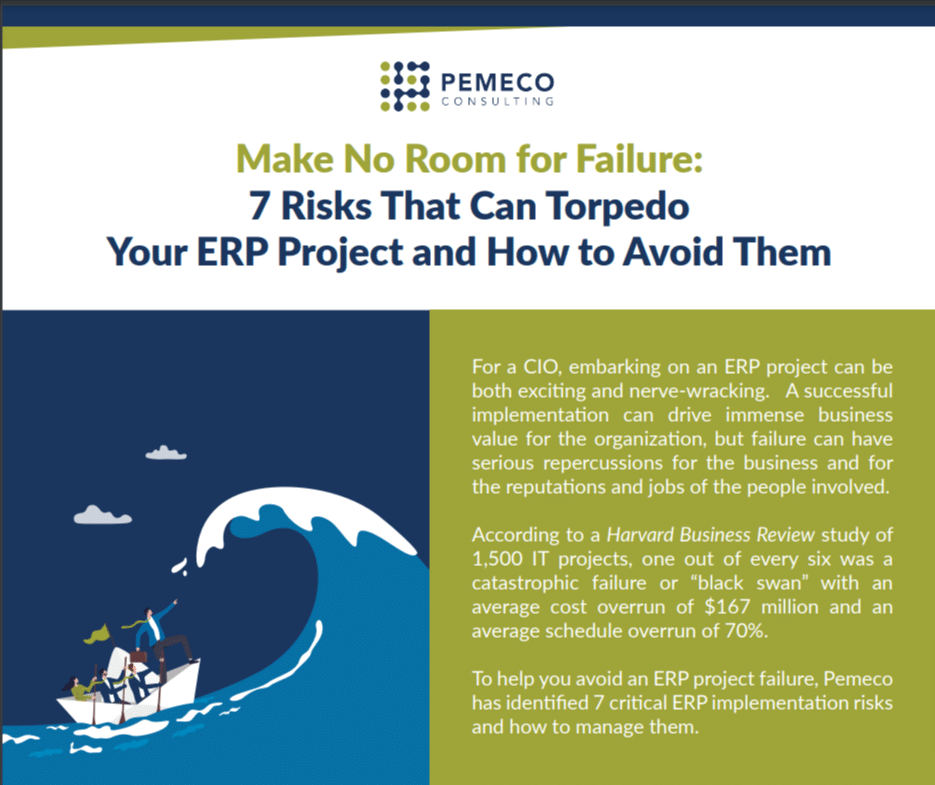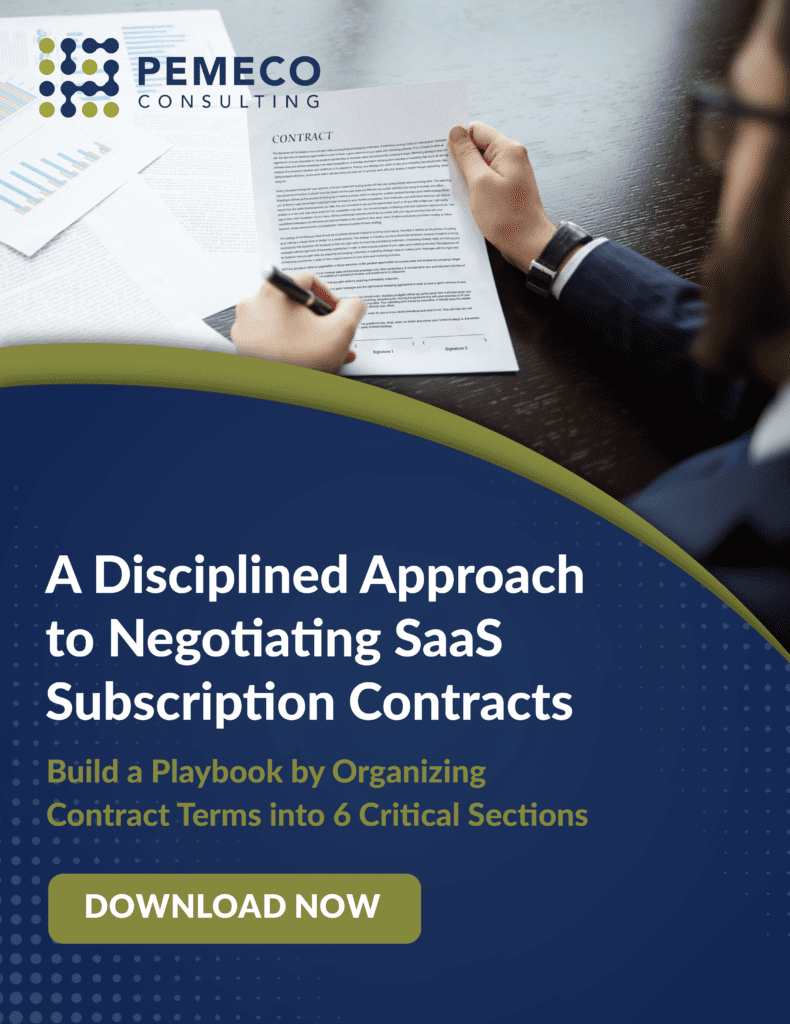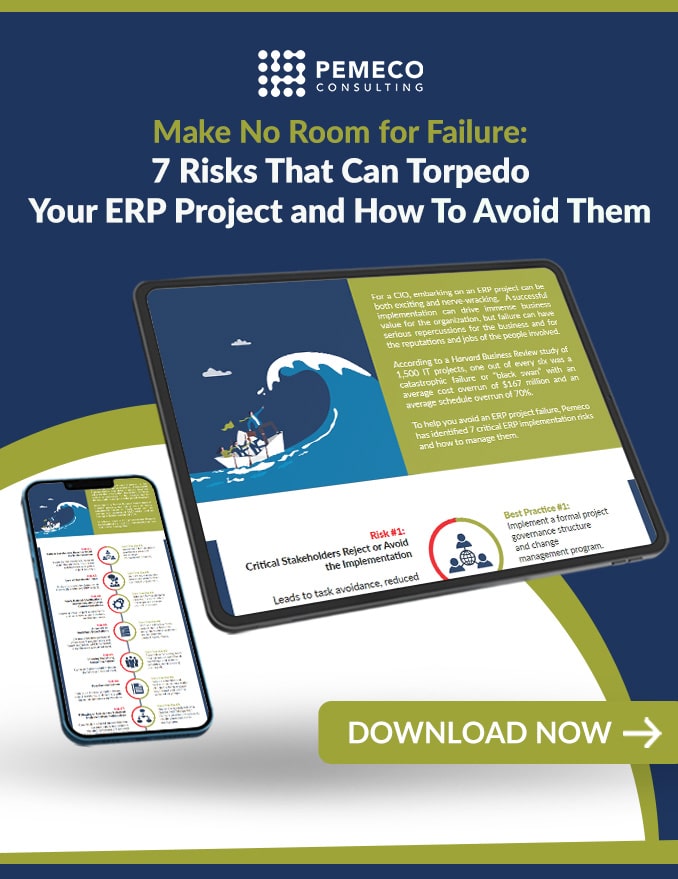Why do so many business executives refuse to assign key functional people to their ERP projects? Why do many of these same executives refuse to dedicate much of their own time and effort to the project?
This isn’t an academic question, because insufficient commitment from senior leadership typically leads to disaster. According to a 2011 Harvard Business Review study of 1,500 IT projects, 17% of IT projects are black swan failures with an average cost overrun of $167 million and an average schedule overrun of 70%.
A study from the University of Colorado at Boulder concludes that “[c]ommitment from the executive level is arguably the most important factor in information systems planning and implementation.”
So, if executive sponsorship is crucial to a company’s ERP project, why do so many executives fail to treat ERP projects with the care they require for success? Because they view ERP implementation as an IT project, and not as the business transformation project that it is.
Strong leaders needed
Once your executives view your ERP project as central to business transformation, they will prioritize the project as a leading business initiative. They will also be willing to commit the significant human capital and budgetary resources that are needed to implement ERP. A stable, supportive executive steering committee is the leading factor in your success.
For your ERP implementation to deliver a positive return on investment, your company must commit to making significant changes to the way you do business. Making these changes will drive efficiencies, improvements in supply-demand balance, and better decision-making.
To achieve these results, your company must change both your business processes and the organizational structures that enable those processes. Transformation also requires that your people upgrade their skills, shift roles, learn new systems and follow new processes.
The cost of inadequate executive buy-in
If your executives don’t prioritize the ERP implementation, they’ll likely lose control of the project. And that’s bad news because ERP implementations are among the most expensive, disruptive and risky projects your organization will ever undertake.
ERP software projects are costly investments that often take years to pay back. And, for your ERP implementation to be successful, your company must commit your best and brightest to the project for 50% to 75% of their working time. If you operate a single-site, mid-sized business, your ERP project will span 5 to 10 months. For larger enterprises, implementations will span years.
ERP Success Step 1:
Ensure your executive team is onboard with the business transformation
Once you appreciate that your ERP project drives business transformation, your controlling shareholders and board of directors should evaluate your company’s executive leadership. You simply must ensure that your executive team supports this transformation.
Is the executive team stable? Is it the right group to build a new foundation that will support the company over the next 10 to 20 years? If not, key stakeholders should put a solid executive team in place before starting your ERP project.
Your corporate governance group must also have confidence in your executive team’s strategic plan and supporting business models. These models will guide how the implementation teams design the system, business processes and organizational structures.
Before you launch an ERP implementation, your company must have a stable executive team with a strong strategic roadmap.
ERP Success Step 2:
Align your implementation with your business strategy
Once your executive team is onboard, your next step is to align your ERP implementation project with your corporate strategy. You typically perform this step during the project planning phase through a formal project chartering and scoping exercise. In the scope management plan, your team breaks down strategic project business targets into measurable success factors (MSFs). The teams measure project performance against these MSFs.
For example, you might have a customer-service-related strategic goal of achieving an 80% next-day delivery target. The associated, measurable success factors of this goal might relate to forecast accuracy, 95%+ inventory accuracy, 75%+ order management automation, and ‘x’ picks per hour. On implementation, these measurable success factors inform your departmental design, business process designs, data structure and systems designs.
To be successful and to drive efficiencies across your corporation, your ERP project must align with your business goals.
Your executive team is vital to your ERP implementation
Given the tight link between strategy, operations and systems, your executive leadership plays a vital role in your ERP implementation. They must steer the project to ensure that it remains aligned with your business goals. They must control the project through the active management of scope, risk, budget and schedule. They do this by serving on your formal ERP project steering committee. Among other things, this committee should have regular meetings to review the project’s performance against budgets, estimates-to-complete, risks and change requests.
In the long run, the success of your ERP project is determined by whether it catalyzed or impeded your business transformation. A stable, supportive executive steering committee is the leading factor in your success.
Make sure you have the right team!
Download How to Build High-Performance Teams for your ERP Project







